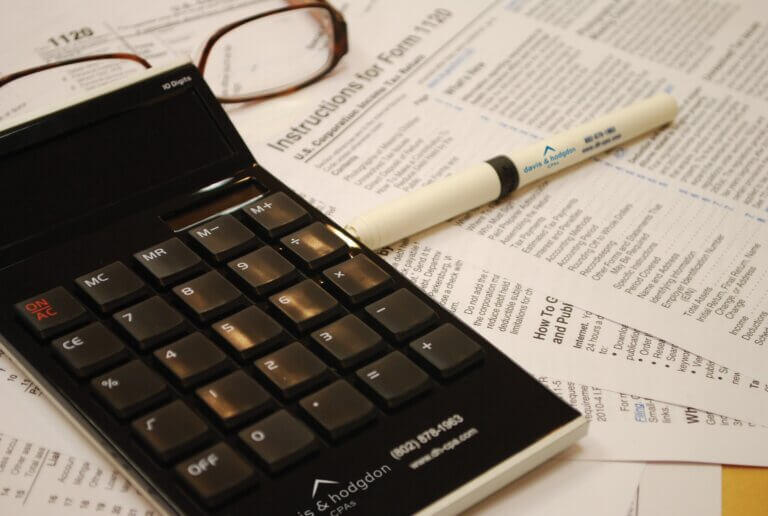Paycheck Protection Program Update for 5/20/2020
PPP Loan Forgiveness Application Released
On May 15th, The U.S. Department of Treasury’s Small Business Administration (SBA) finally released the Paycheck Protection Program (PPP) loan forgiveness application. A PPP loan borrowers will submit this application to their lenders to request forgiveness of part or all of their PPP loan.
The application provides some guidance and answers many questions on how forgiveness will work:
• Clarified the requirement that 75% of PPP be used for payroll costs. The application confirms that the requirement that borrowers need to spend 75% of the PPP loan on eligible payroll costs as not doing so could result in a reduction in the forgiveness amount. However such failure will not be a breach of the loan requirements or result in none of the loan being forgiven.
• Eligible costs include costs paid or incurred during covered period. Costs eligible for forgiveness include eligible costs paid or incurred during the borrower’s covered period, whether or not actually paid during the covered period. Using payroll costs as an example, the application indicates that the full amount of a borrower’s initial payroll paid during the covered period is an eligible cost, even if it included compensation attributable to work performed prior to the covered period. In addition, all employee compensation earned during the covered period will also be an eligible cost whether or not actually paid during the covered period—as long as the compensation is paid to the employee on or before the first payroll date following the covered period. The same concept applies to non-payroll costs.
• Certain borrowers can use actual payroll periods for determining eligible payroll costs. A borrower can elect to calculate payroll costs using an alternate period for administrative convenience that aligns with actual pay periods if the borrower’s payroll is bi-weekly or more frequent. In that case, a borrower would use the eight-week period that starts on its first payroll date following disbursement of its loan.
• An FTE is an employee working on average 40 or more hours. The application states that a 1.0 FTE is any employee working 40 hours or more per week on average during the applicable period and any worker working less than 40 hours during an applicable period will be considered less than 1.0 FTE (rounded to the nearest 10th). The application also permits a borrower to simplify its FTE calculation by providing that employees who work 40 hours or more per week count as 1.0 FTEs and employees who work less than 40 hours per week count as 0.5 FTEs.
• Certain employees are excluded from the FTE reduction calculation. As indicated in previous SBA guidance, the form provides exclusions that will not reduce forgiveness for: (1) positions for which the borrower made a written good faith offer to rehire an employee during the covered period which the employee does not accept, (2) employees fired for cause during the covered period, (3) employees who voluntarily resign during the covered period and (4) employees who voluntarily request and receive a reduction in hours during the covered period, as long as the applicable position was not filled during the covered period.
• Any compensation reductions are based on the employee’s compensation rate. When calculating potential forgiveness reduction due to a borrower reducing the compensation level of employees making less than $100,000 per year during 2019, the application provides that the borrower compares each such employee’s average annual salary or hourly wage, as applicable, between January 1, 2020 and March 31, 2020 to the employee’s average annual salary during the covered period. If the latter is not at least 75% of the former, then there will be a reduction in forgiveness.
• The application defines the formula for applying the FTE and compensation reduction tests. To determine potential forgiveness reduction for the FTE and compensation reduction tests, the application provides that all eligible payroll and non-payroll costs are added together, then that amount is reduced by the wage reduction test amount (if any) and then any reduction due to the FTE test is applied.
• “Covered rent obligation” includes real and personal property leases. The application clarifies that this terminology includes such leases for both real property and personal property.
• The application establishes documentation requirements. The application also specifies the documents a borrower will be required to submit with the application and the documents a borrower must maintain, but will not be required to submit with the application.
There are also some areas that are not entirely clear at this point, such as:
• The requirements concerning “restoration” of FTE employee levels.
• Further defining employee compensation by June 30, 2020, including what will and will not qualify as such.
• For retirement and health care plan contributions, the instructions do not limit the amount that may be claimed to a pro-rated amount for the eight-week period.
• The application does not provide any additional guidance on self-rentals
Borrowers should be on the lookout for the additional guidance the SBA will issue, which will hopefully provide further clarity on issues such as this. We will be posting any new information on our upcoming PPP updates.
As we have seen throughout the PPP loan process, policy and guidance are slow coming, but decisions still need to be made quickly. The forgiveness aspect of this process is more complicated than the application process and the calculations are critical to assure that you have the maximum amount of the loans forgiven. Visit our COVID-19 Resource page HERE for more information or advice along the way.


